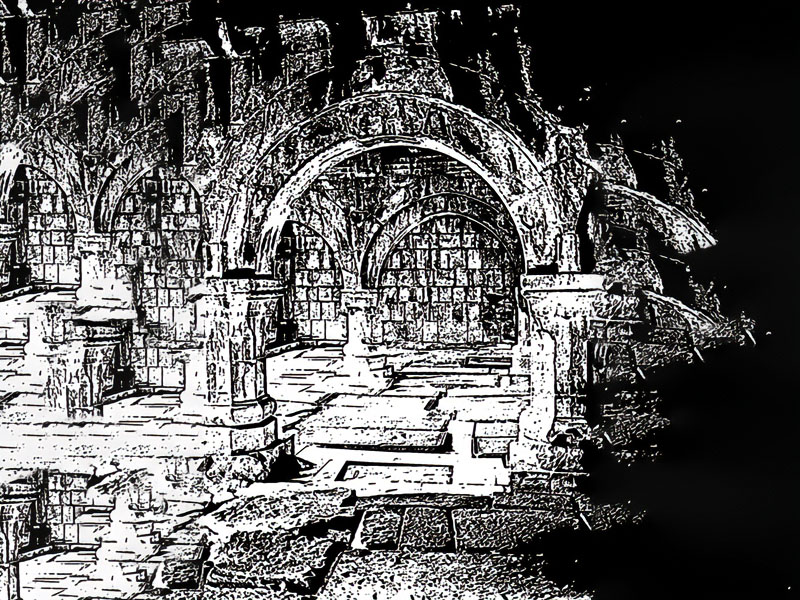Personification In The Books: (The King’s Son and the Monk) and in the Books of “Bilawhar Wa-Būdhāsaf,” Motifs Z110-Z139 According To Al Shami Indexes.
Issue 49

Prof. Dr. Farag Qadri Al Fakharani
Professor of Folk Literature - South Valley University
This research falls within the scope of folk literature studies. It is concerned with classifying personification in two books: one of them is Arabic, "Bluhar wal buthasif" and the other is Hebrew,” בן המלך והנזיר” (The King’s Son and the Monk). The research paper attempts to classify the personification in the two books according to the clasifications of Al Shami’s motifs.
The paper studies personification as one of the aesthetic aspects of folk literature that contributes to the the artistic expression and internal structure of the literary folkloric product, especially when it has didactic nature. I found that personification plays a significant role in both books.
I relied on the text of the Arabic book " Bilawhar wa-Būdhāsaf" by an anonymous author, which was edited and reviewed by Daniel Gimaret, and published in 1976 by Dar al Mashreq Beirut. The reviewed text lies in 186 folio pages starting with the 11-page introduction in French. The reviewer of the book provided his copy by indexes of people, places, and contents.
The Hebrew book "בן המלך והנזיר"(The King’s Son and the Monk) was written by Samuel Ibn Ḥasdai, who lived in Barcelona at the beginning of the thirteenth century. The book was annotated by Habermann and published by “מחברות לספרות בסיוע מוסד הרב קוק – תל-אביב” in 1951. In his annotations, Habermann relied on the Oxford Manuscript No. 349 in addition to thirty editions issued between 1518 and 1922. The most imprtant of which is the Constantinople edition in 1518 and Mantova edition 1557. Many editions were published in various countries, which give us an idea about the presence of literate Jewish communities in those countries. The book is made up of 207 folio pages. This edition (i.e. the one published in 1951) includes two introductions by the editor.
The two books, both Arabic and Hebrow, belong to street literature (chapbooks); both of them are didactical. They include moral values and anecdotes derived from the story of the Indian Monk Siddhārtha Gautama Buddha, the founder of Buddhism.
Among the values taught are the love of the other, not being ashamed to learn from anyone, that one should call to love the enemy before the friend, and values universal in nature.
The two books are based on the same religious legend that was originally written in Sanskrit between the 2nd and 4th centuries AD and translated into the Pahlavi language that prevailed in Persia before the advent of Islam.
In the 8th century AD, perhaps because of the monotheism in the legend, it was translated into Arabic, then from Arabic into many other languages, such as Mongolian, Greek, Latin and Hebrew.
The texts of the two books represent a convergence between two directions in literature, namely: official literature with all its characteristics, and folk literature. Many characteristics of folk and official literature have been represented in both books.
Originally, the two books narrate the life of Siddharta Gautama Buddha, the founder of Buddhism. The tale says that when he was born, the monks told Siddharta’s father that the child had a great future to be a great king or a great monk (holy man).
Therefore, his father worked hard to provide him with all means to become a great king, but Siddhartha, at the age of 29, left his palace to meet his subjects. Despite his father's efforts to hide from him the sick, aged and suffering, Siddhartha was said to have seen an old man. When his charioteer Channa explained to him that all people grew old, the prince went on further trips beyond the palace.
On these, he encountered a diseased man, a decaying corpse, and an ascetic. These depressed him, and he initially strove to overcome ageing, sickness, and death by living the life of an ascetic.
The young man then fled from the life of wandering the streets of India and tried to live the life of a mendicant, yet it did not lead him to the truth he was seeking.
At the age of 35, after a long meditation period, he attained enlightenment and became known as the Buddha or "Awakened One". "Buddha" is also sometimes translated as "The Enlightened One”.







































































